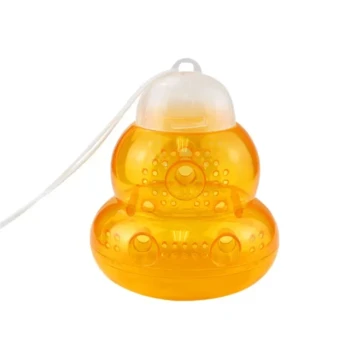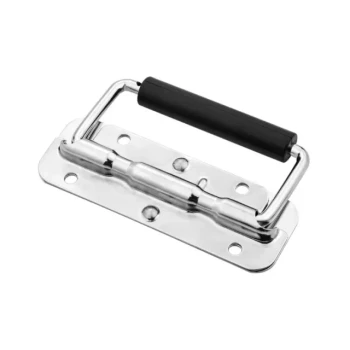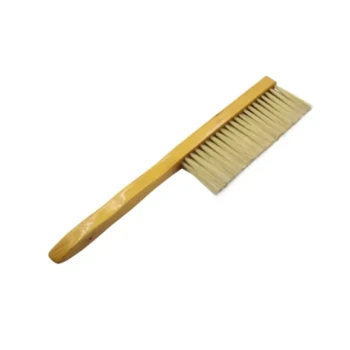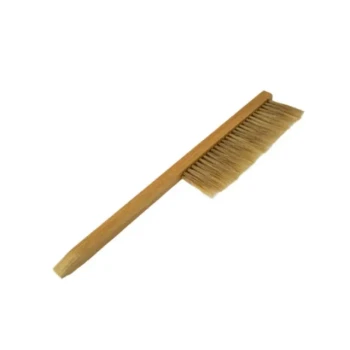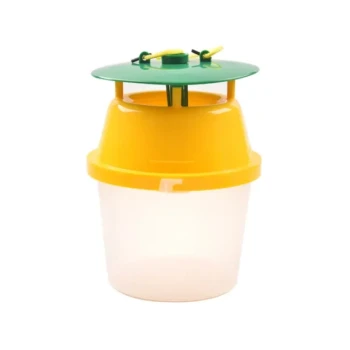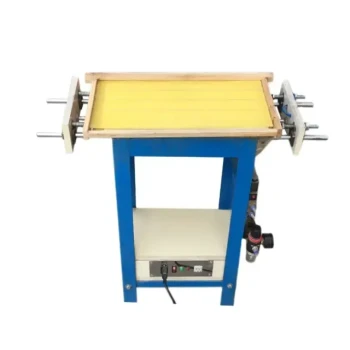Left unchecked, small hive beetles will destroy a colony. The beetle larvae tunnel through the comb, consuming brood and honey, while their waste product creates a slime that ferments the remaining honey. This contamination creates an unbearable environment, ultimately causing the bee colony to either die or abscond, abandoning the hive entirely.
The presence of a few adult beetles is normal, but the true threat lies with their larvae. An infestation signifies a deeper problem: the bee colony has become too weak to defend itself, allowing the beetle population to explode and overwhelm the hive.

From Nuisance to Overwhelming Infestation
Seeing a few small hive beetles (SHB) in a hive is much like seeing a single cockroach in a house; it's an unwelcome guest, but not necessarily a sign of a full-blown crisis. A healthy, populous bee colony can effectively manage a small number of beetles.
The Role of a Strong Colony
A strong colony is the single best defense against SHB. Worker bees will actively harass and chase adult beetles, often imprisoning them in cracks or cells with propolis. This constant policing prevents the beetles from laying eggs freely on the comb.
When the Balance Shifts
The problem begins when a colony weakens due to stress, disease, or a low population. The bees become outnumbered and can no longer effectively police the adult beetles. This gives the beetles the opportunity they need to reproduce unchecked.
The Cascade of Hive Destruction
Once the beetle population gains the upper hand, the hive's collapse follows a predictable and rapid pattern. The damage is driven not by the adult beetles, but by their voracious larvae.
Larval Invasion and Tunneling
Adult beetles lay their eggs in the hive, and these hatch into small, white larvae, or maggots. These larvae begin to crawl through the honeycomb, consuming everything in their path, including honey, pollen, and bee brood.
The "Slime-Out" and Fermentation
As the larvae feed, they leave behind a trail of waste product. This fecal matter, often called "beetle slime," coats the comb and contaminates the honey. The slime contains a yeast that causes the honey to ferment rapidly.
The Odor of Decay
The fermenting, slimy honey produces a characteristic and foul odor often compared to that of decaying oranges. This smell is a definitive sign that the hive is in a state of advanced infestation and collapse.
The Final Outcome: Absconding or Collapse
The combination of destroyed comb, fermented honey, and the overwhelming presence of beetle larvae makes the hive uninhabitable for the bees. Faced with these conditions, the remaining bees will either abscond (abandon the hive) or the colony will perish completely.
Common Pitfalls and Misconceptions
Understanding the signs is critical, but misinterpreting them can lead to inaction or unnecessary panic. The key is to distinguish between a manageable presence and a critical infestation.
Mistaking Presence for Infestation
The most common mistake is overreacting to the sight of a few adult beetles. Eradicating every single beetle is not a realistic goal. The focus should be on maintaining a strong colony that can manage the beetle population on its own.
Ignoring the True Warning Signs
Conversely, ignoring the first appearance of beetle larvae is a critical error. The presence of even a few "slimy worms" means the beetles have successfully reproduced and the colony's defenses have been breached. This requires immediate intervention.
How to Apply This to Your Hive
Your response should be directly proportional to the signs you observe during an inspection. The goal is to support the colony's natural defenses and intervene only when the balance has tipped in favor of the beetles.
- If your primary focus is proactive prevention: Maintain a strong, populous colony with a young, productive queen, as this is the most effective and natural defense.
- If you see a few adult beetles but no larvae: This is normal. Continue to monitor the hive's strength and ensure the bees have enough resources to stay populous.
- If you see numerous beetles on the combs and signs of larvae: Your colony is struggling. You must take immediate action by removing any slimed frames and implementing beetle traps to reduce the pest population.
Ultimately, managing small hive beetles is a core component of managing honey bee colony health.
Summary Table:
| Consequence | Description | Key Sign |
|---|---|---|
| Larval Tunneling | Larvae consume brood, honey, and pollen, destroying comb. | Worms in the comb. |
| Hive 'Slime-Out' | Larval waste ferments honey, creating a foul-smelling slime. | Slimy, fermented honey. |
| Colony Loss | The hive becomes uninhabitable, leading to bee death or absconding. | Strong odor of decay; abandoned hive. |
Protect Your Investment and Your Bees' Health
An unchecked small hive beetle infestation doesn't just mean a lost hive—it means lost honey production, lost pollination services, and a significant financial setback. For commercial apiaries and beekeeping equipment distributors, effective pest management is non-negotiable.
HONESTBEE supplies the durable, wholesale-focused equipment and supplies you need to maintain strong, defensible colonies. From beetle traps to essential hive components, we help you build the foundation for a thriving operation.
Don't wait for the slime-out to start. Strengthen your defenses and secure your apiary's future.
Contact HONESTBEE today for wholesale pricing on proven beekeeping solutions.
Visual Guide

Related Products
- Black Plastic Beetle Barn Hive Beetle Trap for Beehives
- Reusable Clear Small Hive Beetle Traps for Beehives Beetle Trapping Tools
- Removable Washable Hive Beetle Trap Attractants for Small Hive Beetles
- Plastic Beetle Blaster Trap Beekeeping Tools and Supplies
- Professional Galvanized Hive Strap with Secure Locking Buckle for Beekeeping
People Also Ask
- What tips can help prevent hive beetle infestations? Build Strong Colonies & Master Apiary Hygiene
- How should filled beetle traps be handled? Safely Remove and Dispose to Protect Your Hive
- What should be done if a hive shows signs of a small hive beetle infestation? Protect Your Hive Now
- What is the best time to use beetle traps? Master the Spring Strategy for Effective Hive Protection
- How should beetle traps be placed in the hive? Achieve Perfect Flush Placement for Maximum Control





